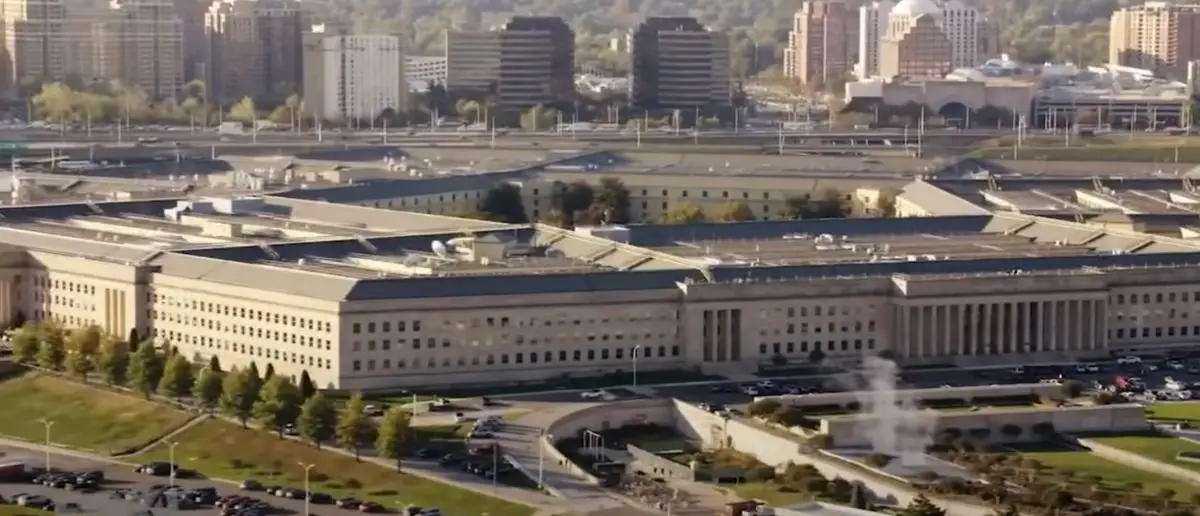
Joe Biden is pushing us to the precipice. And there may be no going back.
And now the Pentagon released a sobering report about a possible world war.
House lawmakers received a stark briefing Wednesday on the potential consequences of a U.S.-China conflict over Taiwan within the next two years. The backdrop: China’s growing aggression toward U.S. allies and its military’s relentless preparation for a showdown.
Operating on a “wartime footing,” China’s defense industrial base boasts a shipbuilding capacity 230 times greater than the United States. This advantage raises concerns about a potential invasion of Taiwan — once considered distant but now alarmingly plausible.
While U.S. military analysts have projected 2027 as the year China could be fully prepared to launch an invasion, a recent war simulation conducted by the Center for Strategic and International Studies (CSIS) provided a sobering glimpse into what such a conflict could look like. Run 25 times and presented to the House China Select Committee, the exercise showed that an alliance of the U.S., Taiwan, and Japan could repel an invasion and maintain Taiwan’s autonomy — but only at a staggering cost.
The simulated conflict saw over 10,000 casualties across all sides in just three weeks. The U.S. lost two aircraft carriers, 10–20 warships, 200–400 warplanes, and more than 3,000 troops. China fared even worse, losing 90% of its amphibious fleet, 52 major surface warships, and 160 warplanes.
“In our tabletop exercise today, we walked through one simulation of what might happen in a worst-case scenario conflict with China and learned ways we can work together in a bipartisan manner to ensure that America is prepared to be the arsenal of democracy once more if called upon,” said Rep. John Moolenaar, R-Mich., chairman of the committee. “No matter where or when, the United States and our allies must have the military means to defeat our adversaries.”
The briefing underscored four critical priorities for U.S. strategy:
- Taiwan Must Hold the Line: Taiwanese forces must be prepared to withstand a ground invasion from day one.
- Immediate U.S. Decisions: Unlike the gradual escalation seen in Ukraine, the U.S. must commit to Taiwan’s defense immediately to have any chance of success.
- Japan as a Key Ally: With South Korea unlikely to allow combat missions from its territory, Japan would play a vital role in supporting U.S. and Taiwanese operations.
- Urgent Missile Stockpiling: The U.S. needs to significantly boost its supply of anti-ship missiles, as its current inventory would be depleted in less than a week.
While the war game assumed a 2026 invasion date, the reality is that China could act sooner. The Chinese military’s massive modernization efforts include a navy larger than any other, with over 370 ships and submarines. By comparison, the U.S. Navy has 295 vessels, including 11 aircraft carriers.
Adm. Samuel Paparo, head of U.S. Indo-Pacific Command, noted that Chinese military drills this past summer were unprecedented. “This included on one particular day 152 vessels at sea,” he said, describing the largest rehearsal of People’s Liberation Army (PLA) forces he’d seen in his career.
Paparo warned that China would only launch an invasion if Taiwan declared independence, a third power intervened, or Beijing determined that peaceful “reunification” was impossible. However, China’s increasingly bold maneuvers near U.S. allies like Japan and the Philippines suggest it’s testing the waters for a larger confrontation.
CSIS analysts emphasized that U.S. forces would need to engage directly to repel a Chinese invasion, as shipping arms to Taiwan would be nearly impossible under China’s missile threat. “U.S. forces would have to be directly involved,” said Naval War College researcher Matthew Cancian. “There is no way to achieve denying a takeover of Taiwan while also keeping U.S. forces safe.”
He added that delaying U.S. involvement, even by two weeks, would leave China with an insurmountable advantage. Coastal defense cruise missiles and Harpoons would be “absolutely critical” for Taiwan’s survival.
One wild card in the scenario is North Korea, which could exploit U.S. distractions to attack South Korea. There’s also the broader risk of nuclear escalation, which would make a measured response essential. Lawmakers stressed the importance of arming Taiwan with smaller, more survivable ships and munitions while avoiding direct attacks on the Chinese mainland.
Rep. Carlos Gimenez, R-Fla., highlighted the urgent need for the U.S. to rethink its military production. “We need to make them fire their exquisite stuff at our non-exquisite stuff,” he said. “They’re going to out-produce us… we need to wake up.”
Under President-elect Trump, the U.S. may adopt a more aggressive posture toward defending Taiwan, though Trump himself has been noncommittal, suggesting Taiwan might need to “pay” for U.S. protection. Regardless, the war games make one thing clear: China will choose the time and place, and the U.S. and its allies must be ready.
With Taiwan’s defense budget still overly focused on large, easily targeted ships, and the U.S. stockpile of critical munitions alarmingly low, time is not on the defenders’ side.
Stay tuned to the DC Daily Journal.





